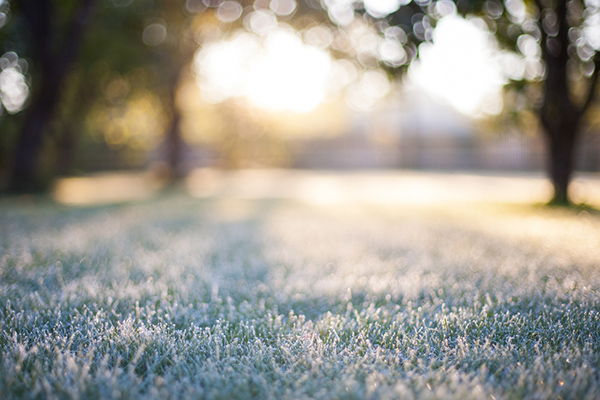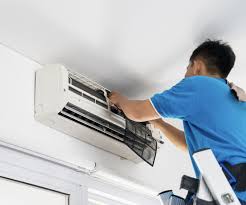
Most lawn owners are busy during the spring and summer months. For one, summer comes with the hottest climate that can leave the grass thirstier than usual. Meanwhile, spring is the prime time for fertilization and lawn treatments in West Chester, OH.
But no matter how diligent you were with your lawn care during these seasons, your lawn may still look pale, tired, and a little worn out when fall comes. Due to the wear and tear of summer playtime and hot weather, it’s likely that the grass has already used up almost all the nutrients it can get from the soil.
For this reason, you must remember that lawn care is a year-round responsibility. While the grass may be dormant during winter, it doesn’t necessarily mean you have an entire season to take a break from lawn care.
What it does mean is that you’ll need to prepare your lawn before Jack Frost decides to pay your property a visit. If you’re unsure about what you need to do to secure your lawn come autumn, read about these six crucial tasks that lawn care experts in West Chester, OH recommend:
- Mow correctly
Mowing is an essential task for lawn care during every season. The difference per season lies in the ideal frequency and mowing height.
In summer, you should never mow your lawn too short or too often. This is because shorter blades of grass can leave your lawn scorched during the warm summer months.
However, things are a bit different in the fall. As winter draws near, the temperature starts to drop as well.
During this time, mowing should be done with an interval of 10 to 14 days until all the leaves have fallen. This will prevent the fallen leaves from smothering your lawn while ensuring a healthy length of the leaf blades to help the grass prepare for winter.
Generally, grass blades should be kept at 1.5 inches for warmer climates and 0.75 inches when you live somewhere colder. To be sure, do research on the minimum recommended length for the grass species planted in your yard.
Keeping the grass at a healthy length also lessens fungus growth when the snow starts falling. It helps delay the mowing schedule until the weather becomes warmer as well.
- Limit or stop watering your lawn altogether
While West Chester, Ohio gets less snow than the annual average for the entire country, the transition into winter still means the temperature will get lower than it does during spring or summer. That said, you’ll need to adjust your watering to accommodate changes in the environment and keep your lawn healthy.
Since the weather is cooler in autumn and winter, you won’t need to irrigate your grass with the same amount of water as in the warmer seasons. In fact, you may not even need to water the lawn at all.
If the climate is warmer than your average winter cool, reduce the frequency and length of the sprinklers’ run. If the temperature drops, you can go ahead and stop it altogether. This will keep excess water from freezing overnight and reduce your water bill significantly.
- Aerate your lawn
Aeration is another essential part of pre-winter lawn care.
If you’re doing manual aeration, start spiking the grass when the soil is moist (not soggy). This will make it easier for the garden fork to penetrate your lawn.
This is also true when you’re using a core aerator. Remember that when the ground is hard and dry, the machine’s hollow tines won’t be able to pierce it easily.
Go over the lawn’s perimeter several times to create a buffer zone for the aerator. Running back and forth over the lawn with an aerator or garden spike should boost drainage and allow air to reach the roots.
After aeration, consider brushing some horticultural grit or sand onto the holes to prevent them from closing up again.
- Feed your lawn and maintain your compost
Lawn experts also recommend spreading compost over the lawn after aeration. This will help fill the gaps with nutrient-packed particles and ensure turfgrass health.
Do this especially in areas where the grass is a bit sparse to prepare for seeding. Spread half an inch’s worth of aged compost. Using a snow-shovel, manually sprinkle compost over the area and work it into the lawn using a leaf rake.
Also, remember to use the best compost available. It should be cured, crumbly, dry, and cool. If it feels hot to the touch and emits a pungent odor, it may harbor pathogens that can harm your lawn.
Besides using aged compost for optimized seeding, autumn is also a perfect time to build up your compost pile. With all the leaves falling, you’ll have a good pile of “brown” (dried leaves, branches, and bark) ready to be composted.
As you clean your lawn before winter, set them aside to be added to your pile later. This will prevent the compost from getting too wet and promote better insulation. Don’t forget to leave some for your mower to chop as well.
- Get rid of weeds
Weeds remain a lawn problem all year round, even in autumn and winter. Get rid of them to make sure your lawn is healthy.
You can either remove them by hand using a dandelion tool or apply a broadleaf herbicide to problematic spots. This way, ground ivy, dandelion, and other perennial weeds can be controlled.
- Don’t forget to fertilize
While spring is the most popular time to fertilize (and rightfully so), it isn’t the only time you should feed your lawn.
According to lawn care experts, fertilizing in autumn works, too. In fact, it’s a necessary task to prep the grass for the coming winter months.
Fertilizing in autumn helps strengthen the lawn, allowing it to endure the harsh cold of winter. This will ensure that it grows back into a lush, green landscape come spring.
Always Prepare for Winter
While winter may have different effects on lawns across the country, there are certain maintenance tips that can be applied anywhere you are. These tasks – especially the ones listed in this article – are proven effective in helping prepare your turfgrass to withstand the cold winter months.
Stay Connect with Get News 360
